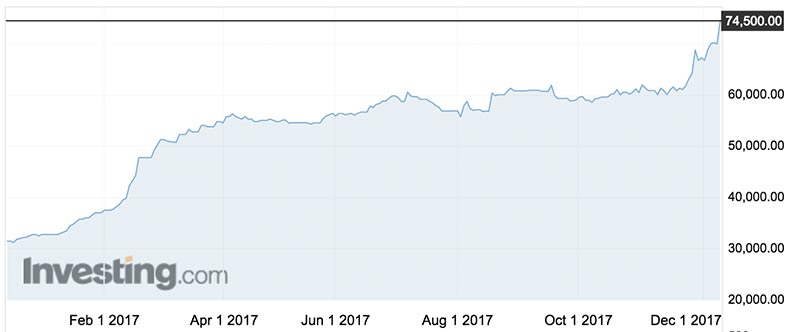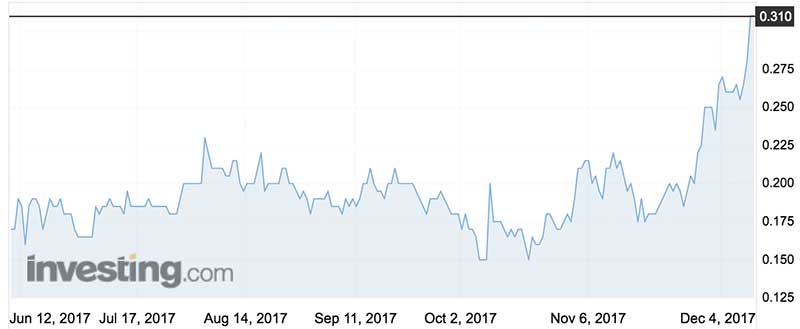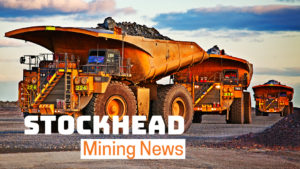Nzuri Copper goes on a run as cobalt price soars

Pic: Schroptschop / E+ via Getty Images
Aussie cobalt miners such as Nzuri Copper are benefitting as cobalt continues its amazing run, writes Barry FitzGerald in his weekly Garimpeiro column
The electric vehicle boom thematic has been a real boon for the key lithium-ion battery commodities.
But as we get ready to rule off the books for 2017, it can be said there has been one standout performer – the bluish-grey metal cobalt.
Its price performance throughput 2017 has been spectacular. It has recently surged to an amazing $US70,000 a tonne (see graph below).
That compares with last (calendar) year’s average of $US25,655 a tonne — which itself was none too shabby, given much of the world’s output of the cathode raw material is a by-product of copper and nickel mine production.

There have been a couple of factors underpinning cobalt’s spectacular price run.
Apart from being represented in the major lithium-ion battery chemistries, cobalt is unusual in the battery mix in that 63 per cent of current world supply comes from the Democratic Republic of the Congo.
The battery supply chain is growing increasingly uncomfortable about its reliance on Congo supplies of cobalt as the country’s recovery from the 1994-2003 war is still very much work in progress.
And then there is the uncomfortable fact that 15 per cent of the nation’s output comes from artisanal workings which are child labour-intensive.
But given demand forecasts suggesting the world needs every gram of cobalt it can get from the Congo, the troubled nation’s status as the major supply source is not going to change in a hurry.
Opinions vary on just how big the demand growth for cobalt will be. Bloomberg’s “new energy” unit reckons it could grow 47 times by 2030.
That sort of outlook reflects growing bullishness around the scale of the Electric Vehicle (EV) revolution which is driving strong growth for all of the key battery materials.
Last week investment bank UBS was the latest to upgrade its expectations.
Its commodities analysts upgraded their estimate of EV sales from 14.2 million vehicles in 2025 to 16.5 million.
That means one in six cars sold in 2025 could be EVs — up from about 1 million now.
And it means a greater need for lithium-ion battery materials — the key ones being lithium, cobalt, graphite and nickel.
It goes without saying that cobalt’s spectacular price rise in 2017 has had a rub-off effect on the growing band of ASX companies that have the metal as their prime focus — or those companies that have copper and nickel projects with cobalt as an increasingly important by-product.
One of those to benefit of late has been Nzuri Copper (ASX:NZC) with its Kalongwe copper-cobalt project in the Congo.
The stock was covered by Stockhead columnist Tim Treadgold on October 13 when it was trading at 15c.
It has since raced off to 31c on the strength of its subsequently released Stage 1 feasibility study into a development of the high-grade Kalongwe, and cobalt’s price surge to $US70,000 a tonne. (See graph below)

The Stage 1 study envisaged a very doable $US53 million ($70.6 million) development producing 19,360 tonnes of copper and 1507 tonnes of cobalt annually. If it was in production last year, the cobalt would have been worth $US38.6 million. Now the figure would be $US105 million.
Having said that, the Kalongwe study was based on a cobalt price of $US40,000 a tonne — highlighting just how far off the scale the current cobalt price is — and without anyone prepared to say it is over-done.
The good news in all that for Nzuri is that Kalongwe was confirmed in the study as a robust project without the help of elevated cobalt prices, or elevated copper prices (it assumed $US3 a pound copper).
Cash costs were estimated at $US1.35 a pound of copper after cobalt revenue credits.
Further out, Nzuri plans to improve project economics by moving from a gravity separation process to the greater recoveries offered by a solvent extraction/electro-winning process.
And given cobalt’s spectacular price run, the potential for the leaching of cobalt-only ore will be investigated.
UNLOCK INSIGHTS
Discover the untold stories of emerging ASX stocks.
Daily news and expert analysis, it's free to subscribe.
By proceeding, you confirm you understand that we handle personal information in accordance with our Privacy Policy.







